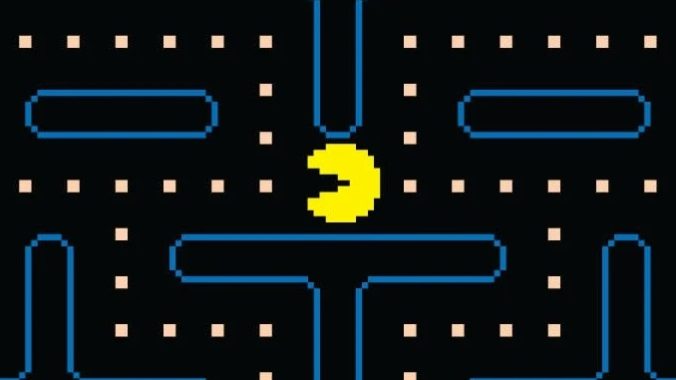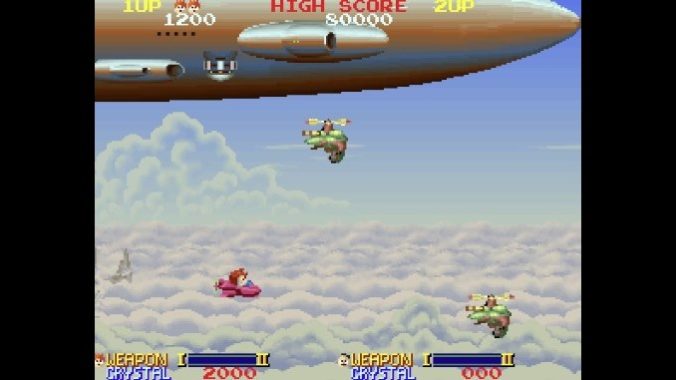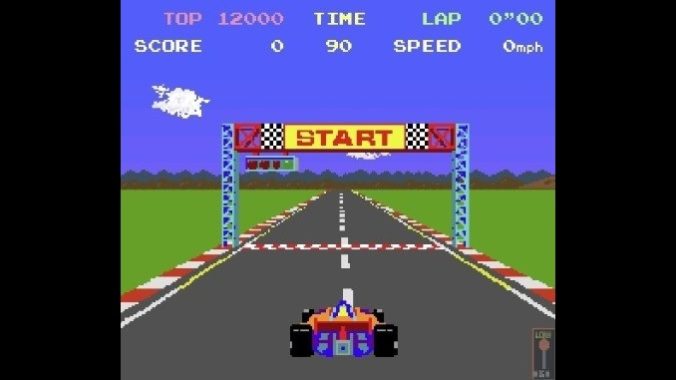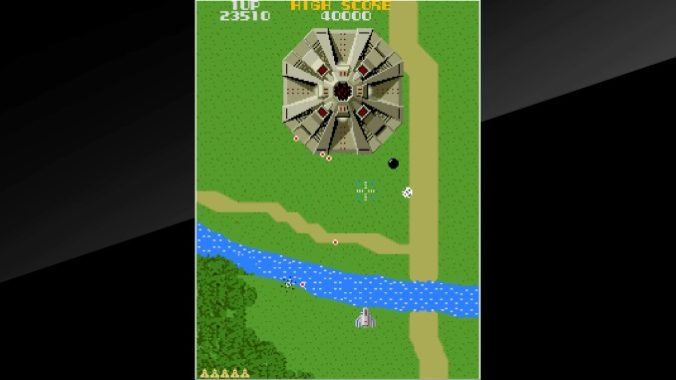
“Namco makes good videogames” isn’t much of a take, and it certainly isn’t news to anyone who pays attention to games. They’ve been around in this industry long enough to have acquired the Japanese division of Atari before acquisitions of Atari divisions were a common (and confusing) occurrence: you don’t start making games that pre-date Space Invaders and stick around for nearly 50 years afterward if you’re not doing something right.
What’s worth talking about all these years later, though, is just how good those games still are, at a time when you can play quite a few of them—even more than the standard Namco Museum release from each console generation since the original Playstation has typically included. Namco—which goes by Bandai Namco these days, a couple of decades into that merger—is far more than the usual Namco Museum suspects, more than Pac-Man, and more than Galaga. There’s a rich history here, much of it happening in Japan instead of internationally, obscuring it and its influence from the west, and, in one of the rare cases of digital distribution working out in everyone’s favor, more of that history is available internationally now than has ever been before.
There’s the aforementioned Namco Museum of this generation, of course, with Namco Museum on the Switch providing 12 classics in one place: there are the usual suspects like Pac-Man, Dig Dug, and Galaga, but some others that don’t always end up in these compilations like Rolling Thunder or Galaga ‘88 are included as well, and it marks Tank Force’s first-ever Namco Museum release. There are actually two other Namco Museum titles available on the Switch, and these are also on Xbox One/Series S|X, Playstation 4 and 5, and Steam as well: the two-volume Namco Museum Archives, which are compilations of Famicom games either developed or published by Namco. That’s 33 Museum titles available right now if you’re a Switch owner, 22 if you have anything else that’s current. (And if you have an Evercade, there are two Namco collections for that, as well, with another 22 ports of console titles between them.)
What sets the current moment apart from past ones, however, is how much else of Namco’s back catalog is available outside of the Namco Museum model. Thanks to Arcade Archives, we’re seeing so much more of Namco than those compilations tend to allow: it’s wonderful that Namco is constantly re-releasing their most popular games each generation, making quality of life updates, keeping online leaderboards active, and so on, but it’s also good to go beyond the umpteenth release of Pac-Man. And Arcade Archives starting to publish Namco titles a few years back has achieved that goal and then some.

There are 49 Arcade Archives Namco releases available as of this writing, and that number has already grown considerably just in 2023. Hamster, the publisher behind Arcade Archives, keeps rifling through and releasing bits of Namco’s library, whether it’s for the standard fare already mentioned above, or deeper cuts like Cosmo Gang The Video, or Ordyne, or Wonder Momo, titles that have either never appeared in a Namco Museum release or have shown up just the one time decades ago when the prevailing attitude was “why would I want to play this old game?” instead of joy at being given access to the rich past of videogames. How times have changed.
Sure, in some cases the titles that are available are probably more of a curio at this point than a great time. Take Pac-Land, for instance—a sequel to Pac-Man that switched from mazes to a sidescrolling, 2D platformer, one so early in the genre’s life that it’s a clear influence on the likes of Super Mario Bros. (Which, as you might know, has plenty of its own history and influence to consider.) That’s the thing with Namco’s arcade work in the ‘80s, though: even the stuff that doesn’t quite hold up has a story and influence behind it worth knowing about, and was often a driving force in the industry at large.
Pac-Land helped along the development of an entire genre as part of the push from single-screen platformers to scrolling ones. Before topdown racer Rally-X released in 1980, music in videogames tended to be relegated to the title screen of arcade games to attract players, or was made by programmers doubling as sound engineers on hardware that wasn’t designed with music in mind, as is the case with Taito’s Space Invaders and its four-note, repeating loop of sound. Rally-X arrived in the age of programmable sound chips, though, and showed music could play in-level, continually, instead of just as a brief ditty before or after them. Namco might have quickly released an update that addressed some of Rally-X’s issues in the form of semi-sequel New Rally-X, but that doesn’t change the original’s place in history. Galaxian doesn’t feel like an obvious must play these days despite its massive influence on fixed shooters and shoot ‘em ups in general, but much of that has to do with its sequel, Galaga, which is inarguably one of the greatest games of all time and is still a joy to fire up in 2023. If you know what preceded Galaxian, it can still wow you in that regard.

Pole Position—which, incredibly, is not available through Arcade Archives at the moment and wasn’t part of this recent batch of Namco Museum offerings—is arguably the most influential racing game ever: we’re pretty familiar with the idea of a Formula 1 racer that takes place in a third-person view, on a track that exists in the real world, that tries to simulate the experience of actually driving one of those vehicles in-game. Pole Position nailed all of that in a way that had never been done before, to the point that it not only influenced the direction of the entire racing genre from then on, but also was the most commercially successful arcade game in Japan in its release year of 1982, as well as the highest-grossing arcade game in the United States in both 1983 and 1984, and still top five in ‘85. At one point, it was earning, adjusted for inflation, $27 million per week in American arcades. Namco just casually released that kind of arcade smash hit two years after Pac-Man, one year after Galaga, and in the same year as Dig Dug, which developed its own genre—strategic digging—by taking the maze play of Pac-Man and putting the making of those mazes into the hands of the player.
And then there was 1983’s Xevious, which is the most influential shoot ‘em up ever: basically everything worth playing in the genre for the rest of the decade took some kind of cue from Xevious, which featured an early version of the “rank” system that adjusts to player behaviors and ship power-ups to make the game more or less difficult, had vertically scrolling screens instead of fixed ones, and allowed player movement not just from side to side, but up and down and all around the screen as well. Xevious might seem somewhat quaint compared to some of the manic, bullet hell experiences that exist today, but they are merely an evolution of a process begun by Xevious, which would stop spawning enemies you personally dispatched easily and introduce tougher ones more often instead, pitted you against more and faster bullets the longer you lived, and tasked you with not just focusing on firing your guns at flying foes, but also aiming and dropping bombs on the ground, as well. And all of this back in 1983! Xevious has seen loads of re-releases over the years, but it’s still worth playing, its foundation still clearly strong all this time later.
Xevious has been widely available again and again, and received countless ports and international releases. Fine: how about something that didn’t receive its own solo release outside of Japan until well after its heyday? 1984 action RPG and dungeon crawler The Tower of Druaga requires an entire feature of its own just to explain its influence over the industry, but we’ll condense things here. Shigeru Miyamoto, a legend himself, spoke to the creator of The Tower of Druaga, Masanobu back in early 1986 about his love for that game (and Xevious, which Endo was also responsible for)… a love significant enough that it helped to drive the direction of development for Miyamoto’s own masterpiece, The Legend of Zelda. The Tower of Druaga helped refine action RPGs, action-adventure games, and because of the way players in Japanese arcades helped each other learn the game’s many, many hidden secrets through the use of notebooks kept by the arcade cabinets, there’s even a direct line to draw between it and FromSoftware’s ridiculously popular Souls games of the present-day, like 2022’s Elden Ring. Miyamoto had a The Tower of Druaga cabinet brought to Nintendo’s office back in the mid-’80s, which should tell you all you need to know about its quality.
No one outside of Japan was aware of any of this, of course, and previous home releases of The Tower of Druaga as part of Namco Museum compilations were lacking in the communal hint system that helped people get through what is an admittedly brutal and unforgiving game. Now, though, the Switch Namco Museum release lets you pause the game to see hints about the hidden items on each floor, their purpose, how to acquire them, and so on, and the Famicom version on Namco Museum Archives will let you rewind in order to try again, as well. There’s literally never been a better time to give this game a go outside of Japan than there is right now.

The influence and history don’t stop there, either: Dragon Buster is an early action RPG, a sidescroller that arrived on the scene in 1984 before Nihon Falcom made a name for themselves in that space with Xanadu and Legacy of the Wizard (which Namco happened to publish the Famicom port of). It was an early adopter of a visible health bar so players could make strategic decisions about attacking, defending, or fleeing. It was one of the first games to feature an overworld map, and on top of that featured branching level selection paths. It was the first game to include a double jump, which allowed for multiple paths and exploration in-level—which means this is one game that influenced the creator of one of the great action RPG development houses out there, future platformers, and helped to shape the eventual pathfinder/Metroidvania line, to boot! It’s pretty absurd to consider that, in just a little over three years’ time, Namco changed shoot ‘em ups forever, outlined the standard conventions of third-person racing games, invented the digging genre while evolving maze-based games, changed shoot ‘em ups forever again, started drawing a line that led to the Zelda, Ys, and Souls series, and topped all of that off with a sidescrolling action RPG that was also so proto-Metroidvania that it predates Metroid and Castlevania by years, plural.
And this is leaving aside the Namco stuff that’s just fun to play but lacks unbelievable history and influence. Valkyrie no Densetsu, or The Legend of Valkyrie, is a personal favorite Namco title, a game that combines action-adventure elements with those of action RPGs and platformers to create an experience that should not be missed. The Arcade Archives release is still in Japanese, but you don’t need to be able to read that language to play this game, nor to love it. Plus, it’s the first such international release of the arcade game since it was included on a Namco Museum for the original Playstation: take what you can get here. The Genji and the Heike Clans is a hack-and-slash action game that will challenge you, and one that hasn’t seen much release or fanfare outside of Japan. Dragon Spirit and Dragon Saber successfully answer the question of “what if Xevious had you riding a dragon?” (answer: it would rock). Baraduke is a cult classic that, while rude in its difficulty, has also received comparisons to Metroid, which it predates by a year (though Baraduke comparatively puts its thumb on the action side of the action vs. exploration scale). There are dozens more beyond these, and so many are still worth checking out or investing hours into decades after the fact.
And yet, I find myself craving even more of Namco’s arcade output. Where’s Pole Position? Or its spiritual successor, Final Lap? Get Bosconian out there! Or, heading into the ‘90s, where’s shoot ‘em up Nebulas Ray, which tried to refine the gameplay of Xevious on more advanced arcade tech? Or The Outfoxies, a ridiculous weapons-based fighting game that didn’t land commercially but influenced Super Smash Bros? If the recent direction of Arcade Archives is any indication, we’ll be seeing some of these and more, eventually. And given just how rich Namco’s history is, how much of it remained either buried or only allowed out every now and again for the world to see once more, it’s hard to say that’s anything but a positive for those who care about not just access to gaming’s past, but to just having a good time with a fun game.
Marc Normandin covers retro videogames at Retro XP, which you can read for free but support through his Patreon, and can be found on Twitter at @Marc_Normandin.